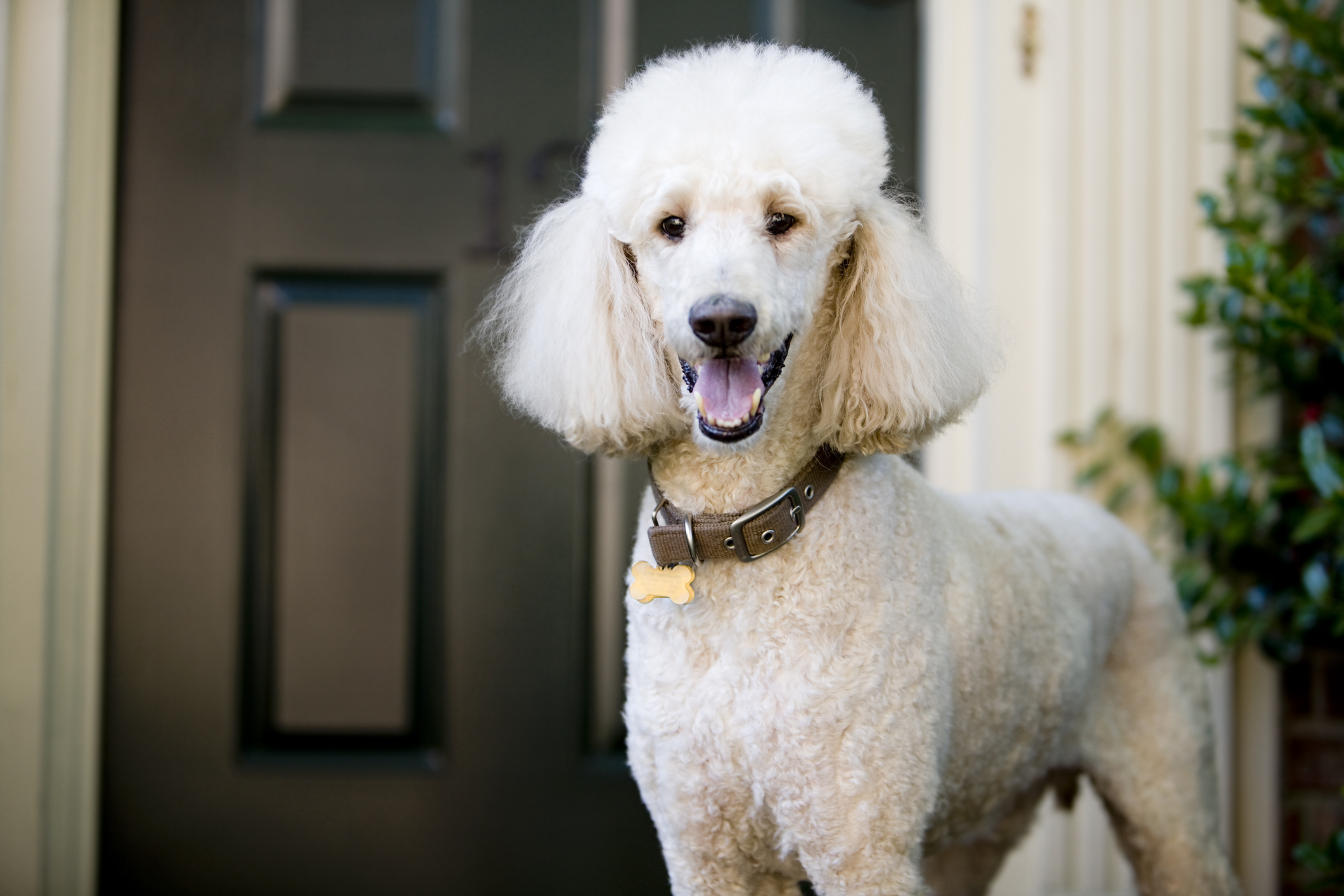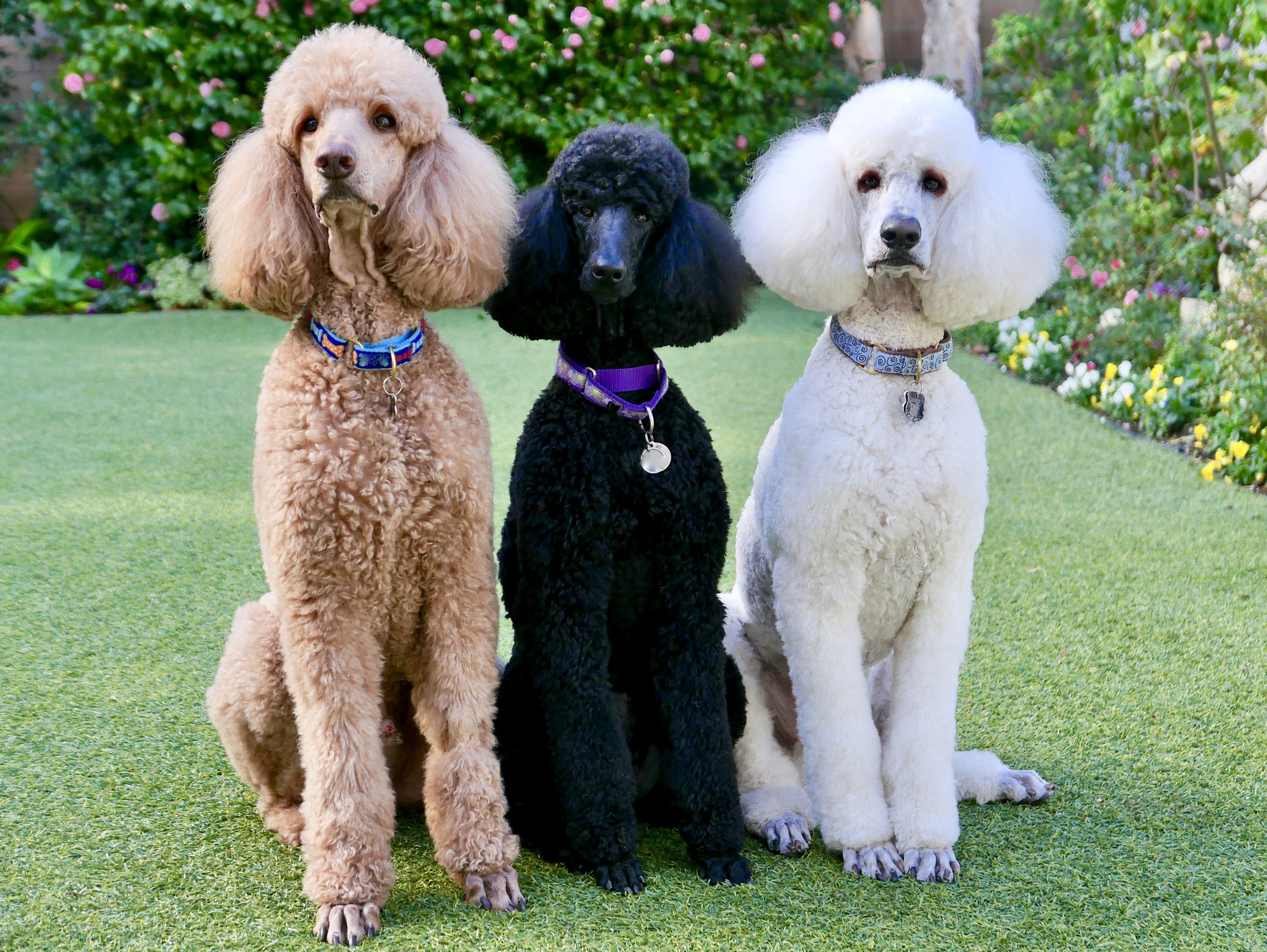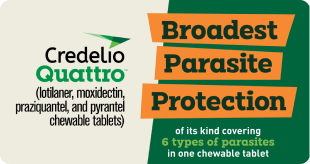
The Standard Poodle has it all: brains, beauty, and a friendship with humans that goes back hundreds of years.
Affectionately known as “Spoos,” these dogs are internationally adored, from their roots as German waterfowl hunters to their well-deserved fame as entertainers, fashion icons, and dog show champions.
In honor of National Standard Poodle Day, learn all about the breed history, breed standard and traits, and best care to prevent and manage common health issues in Poodles.
How The Standard Poodle Came To Be
Curly-coated ancestors of the modern-day Standard Poodle date back as far as Ancient Greece and Rome, with depictions seen on artwork and currency as early as the year 30AD.
The first appearance of the breed as we know it can be traced back to medieval Germany’s pudelhund, which directly translates to “puddle dog.”
The first Poodles were bred as hunting companions that dove into bodies of water to retrieve fallen waterfowl. As wet, heavy hair could slow the dog down, their dense, curly coat was trimmed close to their body, with strategically placed puffs and pompoms to protect their joints and internal organs from the cold.
Though they’re recognized as the national breed of France, it wasn’t until the 15th century that the breed was imported and popularized. In France, the Poodle was known as the caniche or “duck dog.”
While France continued to breed the early French Poodle for hunting waterfowl, some were selectively bred to create a smaller version of the beloved breed that possessed the same intelligent, eager-to-please temperament as the Standard. The Miniature Poodle was born, mainly utilized as a canine circus performer that could quickly pick up complex skills like tightrope walking, balancing on a ball, and assisting with magic tricks.
Standard Poodle Breed Traits

The Standard Poodle was among the first breeds recognized by the AKC and the Kennel Club of the UK soon after the organizations’ foundings in the late 19th century.
According to the AKC, the Standard Poodle is a well-proportioned dog with dark, oval-shaped eyes, a long, straight muzzle, and a dense, solid-colored coat. Their coat comes in a wide range of colors, from white, cream, blue, gray, silver, brown, cafe-au-lait, to black. Parti-color Poodles, which have a coat consisting of two or more colors, are recognized by the AKC but disqualified in conformation.
The breed standards for the Miniature and Toy varieties are similar to that of the Standard. The Standard Poodle stands at over 15 inches tall at the shoulder, while Miniature and Toy Poodles are under 15 inches and 10 inches, respectively.
Are Standard Poodles Hypoallergenic?
Poodles and other dog breeds considered to be hypoallergenic have a “hair” coat, rather than a “fur” coat. In other words, their coat consists of a single layer of hairs that grow continuously. Dogs with a typical “fur” coat have a double coat that consists of a downy, high-shedding undercoat. A hair coat is characterized by significantly less shedding and the absence of an undercoat.
Individuals with dog allergies are usually allergic to a protein found in the dog’s saliva as well as their dander, flakes made up of dead skin cells. All dogs, including Poodles and other dogs with “hair” coat types, have dander. However, the Poodle’s dense, curly coat tends to lock in dander, so it’s less likely to disperse into the air and in the home environment.
No dog is truly hypoallergenic, but opting for a dog with a “hair coat” or single-layered coat can help prevent or reduce symptoms. Frequent grooming and vacuuming can also lessen the amount of allergy-triggering dander in your home environment.
Common Health Issues in the Standard Poodle
The Standard Poodle is a generally healthy breed, though there are some hereditary conditions that pet parents should be aware of before adopting or purchasing a pup.
Bloat. Like other deep-chested breeds, the Standard Poodle is at risk for gastric dilatation and volvulus (GDV), or bloat, a life-threatening condition. Bloat can be prevented by keeping your dog from eating too quickly and avoiding exercise immediately before and after meals. Your veterinarian may also recommend a preventative surgery called gastropexy.
Polymicrogyria(PMG) is an uncommon, though serious neurological condition in Standard Poodles in which the brain develops abnormally, with an excessive amount of small ridges. The condition can cause blindness, hydrocephalus, an abnormal gait, seizures, and cognitive impairment. It’s typically diagnosed early in life, soon after birth or by the time the puppy is six months old.
Eye conditions are common in Standard Poodles. Dogs with Day Blindness/Retinal Degeneration (DB/RD) or achromatopsia experience light sensitivity soon after birth and usually become blind by five years of age.
Epilepsy, or seizures without known cause, are common in Poodles. While this condition is incurable, seizures can be controlled with lifelong medication.
Hip dysplasia is a condition in which the ball-and-socket joint of one or both hips becomes displaced. It’s primarily seen in large breeds like the Standard Poodle. While hip dysplasia can be detected with x-rays in young dogs and puppies, symptoms like pain, limping, and immobility tend to develop later in life.
Sebaceous adenitis is an autoimmune disorder in which the immune system attacks the sebaceous glands, leading to itching, hair loss, a dull coat, and waxy, flaky skin. It cannot be cured by can be controlled with medication and topical skin treatments.
How To Care For Your Standard Poodle
Like all dogs, your Standard Poodle needs a complete and balanced, high-quality diet to nourish their full-body health and wellness. Puppies should be given a large breed puppy food formulated to prevent orthopedic issues.
Standard Poodles have a continuously growing hair coat that needs to be trimmed every four to eight weeks. Between grooming appointments, brush and detangle the coat 2-3 times weekly or daily as recommended by your groomer to prevent mats.
Your puppy should have core vaccinations and wellness checkups during their first year of life as recommended by your veterinarian. Following puppyhood, your dog should have annual wellness visits, complete with a fecal test, heartworm test and heartworm medication prescription renewal.
To give your puppy the best chance of a long, happy life, choose a reputable, registered breeder that conducts recommended health screening on all of their breeding stock.
Why We Love Standard Poodles
The Spoo is an attentive, highly intelligent dog that still loves working closely alongside their favorite humans. Since their duck-hunting days, they have had an unmatched athletic prowess, eagerness to please, and incredible intelligence, making them optimal for service dog work, competing in sports, obedience trials, or just being a dependable family companion.















































